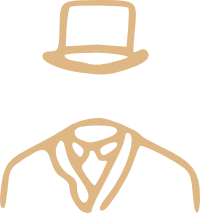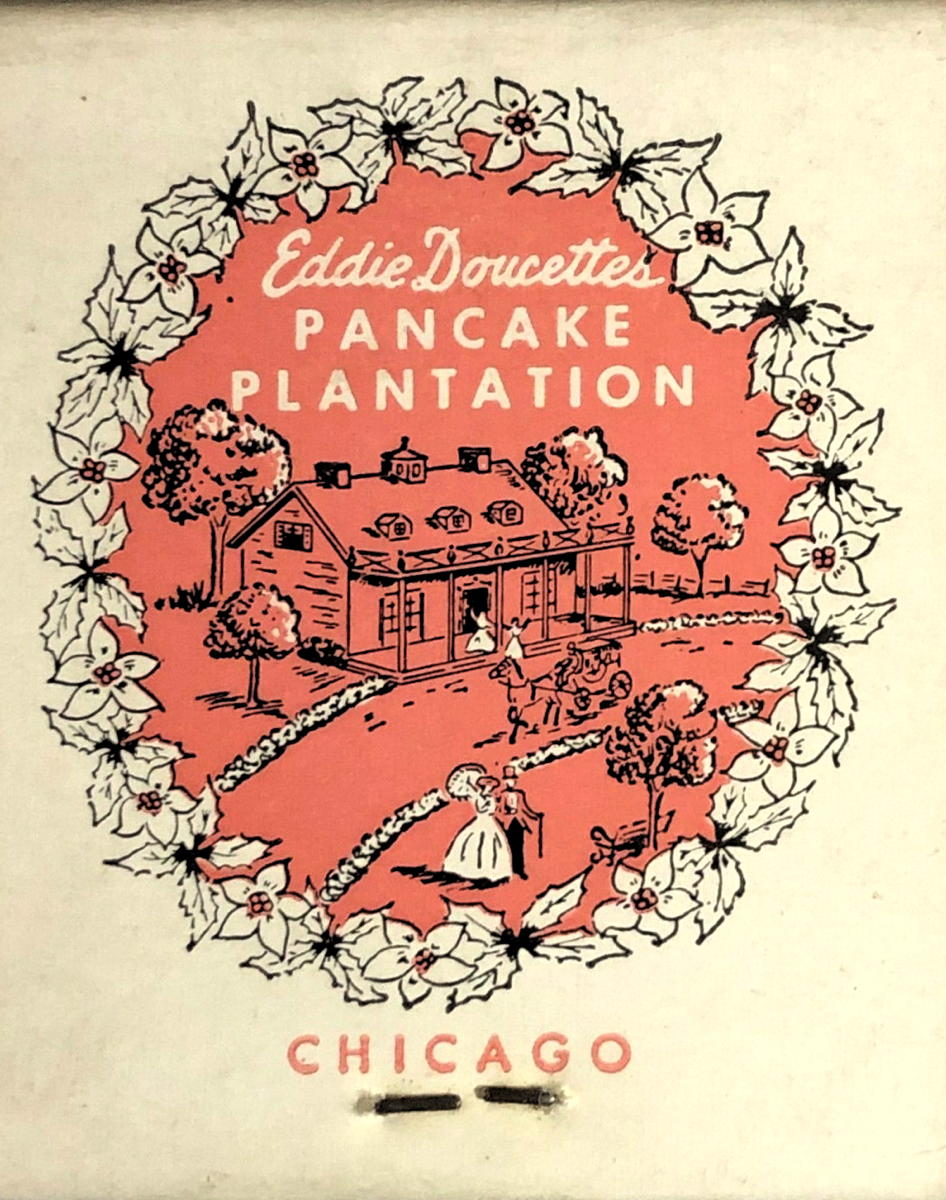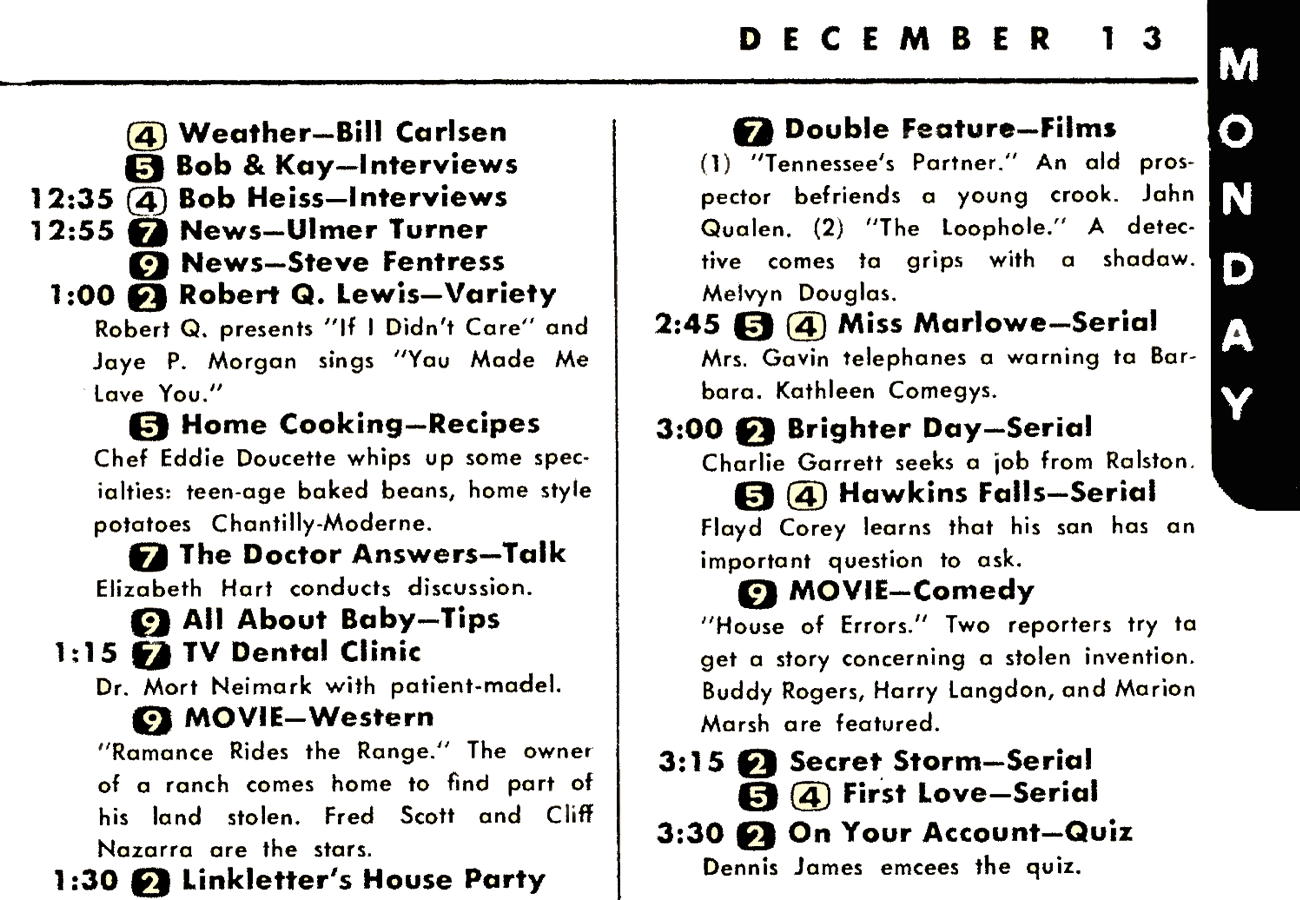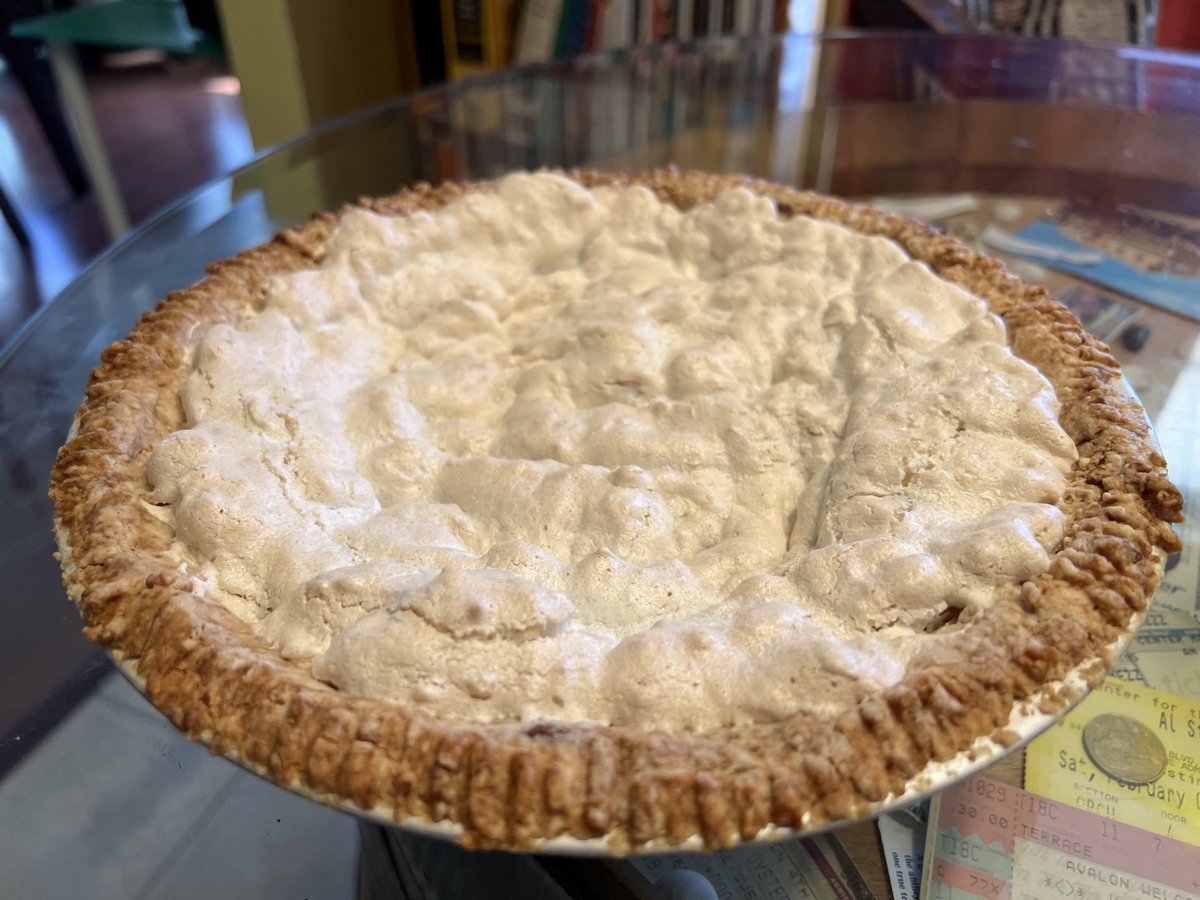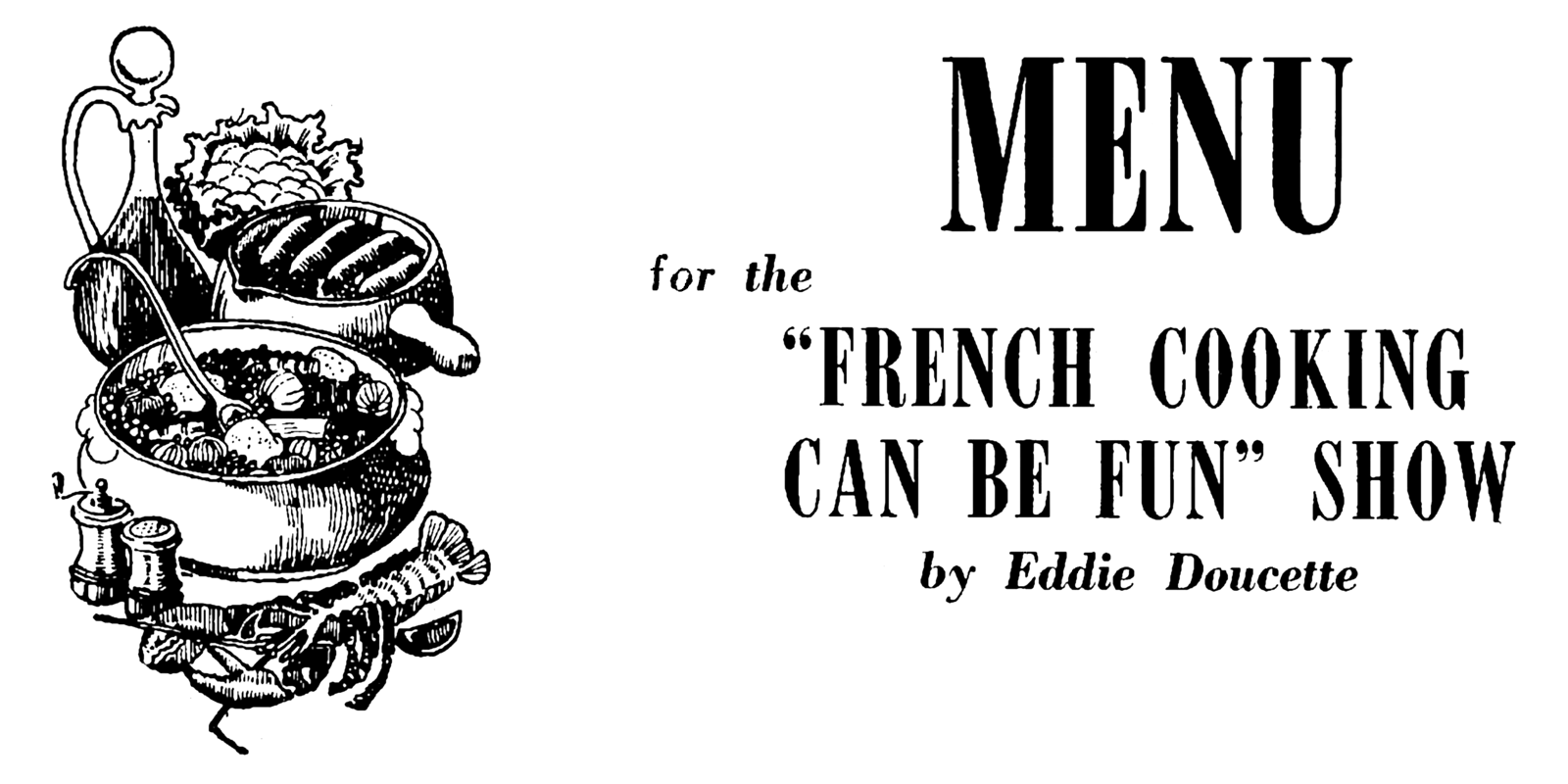A home-cooking handful from Eddie Doucette
Fascinating and easy recipes from a pioneering television show!
These sheets (PDF File, 2.9 MB) were advertised on eBay as recipes from a 1960s Chicago restaurant, Eddie Doucette’s Pancake Plantation. The note said that the typewritten sheets had belonged to their aunt.
I wasn’t interested in recipes from a Chicago restaurant I’d never been to, so I posted it to a vintage recipe group thinking someone else might be. But the title of the sheet didn’t sound like a restaurant to me. Instead of just Eddie Doucette, I did a search on the full title, and discovered a very obscure Chicago cooking show, Home Cooking, that aired in the fifties.
That sounded a lot more interesting. At $2 including postage, I decided it would be worth at least a blog post.
After I received them and looked at them, I asked the seller if they knew how their aunt acquired them, or why she’d typed them up?
Our aunt… had many recipes from Chicago area restaurants from back in the day. Also many recipes from different radio and tv programs. She was an adventurous cook!
So this does indeed sound like a viewer who typed up recipes from a television show they enjoyed. It’s a show that few people seem to remember today. The number of hits on my Internet search for it while writing this brought up all of three hits, one from a 1954 newspaper and one from someone posting old TV schedules. I was able to find a handful more results by rewording the search terms, but there’s literally nothing about anybody talking about the show. All the hits are from contemporary newspapers—mostly TV guide-style listings—and media clippings about upcoming series to watch out for.
Eddie Doucette appears to have been a Chicago celebrity. He owned or ran the Chicago-area Pancake Plantation restaurant, as the seller said. And he had that local cooking show in 1954. Judging from the few references I have been able to find, Home Cooking was probably on for one season. Then Bob & Kay with Eddie Doucette was on in 1955. It was listed as “Music, guests and cooking tips”. NBC called it “Chi’s own magazine of the air and of especial interest to the housewife audience” in a trade news publication dated 4/14/55. I’m guessing “Chi” meant “Chicago”. The variety show seems to have aired at 12:45 Monday-Friday and as far as I can tell was an hour and fifteen minutes long.
That seems odd to me, but I have no sense of what television scheduling was like in the fifties.
Home Cooking aired at 1 PM on weekdays and was half an hour long, according to the December 11, 1954 TV Guide for the Chicago area. It aired on channel 5, WNBQ, an NBC station. It premiered on Monday, August 30, 1954.
Sadly, none of the recipes mentioned in the episode blurbs are the ones in this collection, so there’s no confirmation of my guess about the origin of these recipes. But there are still a lot of TV Guides missing from late 1954 and early 1955 on the Internet Archive. It may be that the recipes are in the missing episodes, or in one (or more) of the episodes that don’t have a blurb, leaving that day’s recipes unknown.
If you’re a collector of Chicago TV guides, and you have a 1954 Chicago TV Guide for the week of September 4, October 23, October 30, November 6, or December 4; or a 1955 Guide for January 15 or January 22, I’d love to have a scan or photo of the 1:00 afternoon slot for Monday through Friday.
Some of those recipes have intriguing names. I have no idea what “home style potatoes Chantilly-Moderne” are, and suspect a misprint of some sort. That doesn’t sound home style to me, unless you’re in France. But then, I had no idea what Miami-style chicken casserole would be, and it turns out to be pretty good, possibly Cuban-influenced.
After he left television, Doucette appears to have become “The IGA Chef”. He—or his disembodied cartoon head—introduced many recipes for the IGA supermarket chain during the sixties. Whether he developed these himself or whether IGA licensed his name and slapped it across their own recipes, I’ve no idea. But I’ll be taking a look at a few of them in a future post.
He apparently had another show, sponsored by IGA, “Cooking Can Be Fun” in 1967, at least in the Dayton, Ohio, area, “every Thursday 9:30 to 10:00 A.M.”. By 1967, television scheduling appears to have settled down to what I’m familiar with.
Judging from the title across the top of these typewritten sheets, the recipes were probably taken down from the 1955 television show, either by hand and typed later or typed during the show. The formatting looks to me like they were most likely typed later. This does not appear to be a stream-of-listening format. There are practically no misspellings, and I’d expect there to be at least some if this was typed at the speed of speech.
As such, all the warnings about older cookbooks apply double: the person taking down the recipes likely assumed things that we do not know. It’s extremely likely that the recipes as written were for their own use and were never planned to be made public.
For example, the Miami Chicken Casserole calls for flouring the chicken pieces in a seasoned flour, and then laying the pieces on the bottom of a casserole. I’d almost bet money that there’s a step left out in between: brown the floured chicken pieces in oil in a fry pan before putting them in the casserole.
It’s hard to tell; I’ve made the recipe both ways, and its good both ways. But this sort of method is almost always accompanied by pre-browning, and I’m pretty sure it’s an assumed step here. Even if the typist meant to hand copies of these sheets around to friends, it might not have been an error. It might just be that she assumed everyone would know to take that step.
The lettuce on top is one of those things I’ve seen in recipes before and have been fascinated by, but until now never got around to making. It somehow retains a cooked crunchiness and gains a vaguely roasted flavor. It’s very good. If I had to guess, the combination of flavors is weirdly Cuban, without Cuban spices. I’ve only done a cursory search, but I can find no chicken casserole like this anywhere on the Internet.
It calls for MSG because Eddie Doucette liked MSG. He was an “ambassador” for Ac’cent. A lot of his recipes call for Ac’cent or MSG. I bought Ac’cent for the first time in order to try this recipe as written. When I run out, I’ll try the same recipes without and see how much it changes them.
With Ac’cent, at least, the Miami Chicken Casserole is definitely worth making again.
The Lobster Bisque is very good, too, though I’m not sure I’ll make it again. Taking apart a lobster is time-consuming, and I didn’t start from scratch. I bought a frozen, cooked lobster. This meant that I didn’t have lobster water, so as I removed the meat from the lobster I put the shell into simmering water, making a stock from it.
I want to emphasize again that these recipes were probably taken down by someone watching them on television. So it doesn’t mention that the bisque is supposed to thicken when you “heat, but don’t boil”. You have to know that you have to heat it enough for the ground crackers and egg yolk to thicken the liquid. Probably 165° or higher, the same as for scalding the milk.
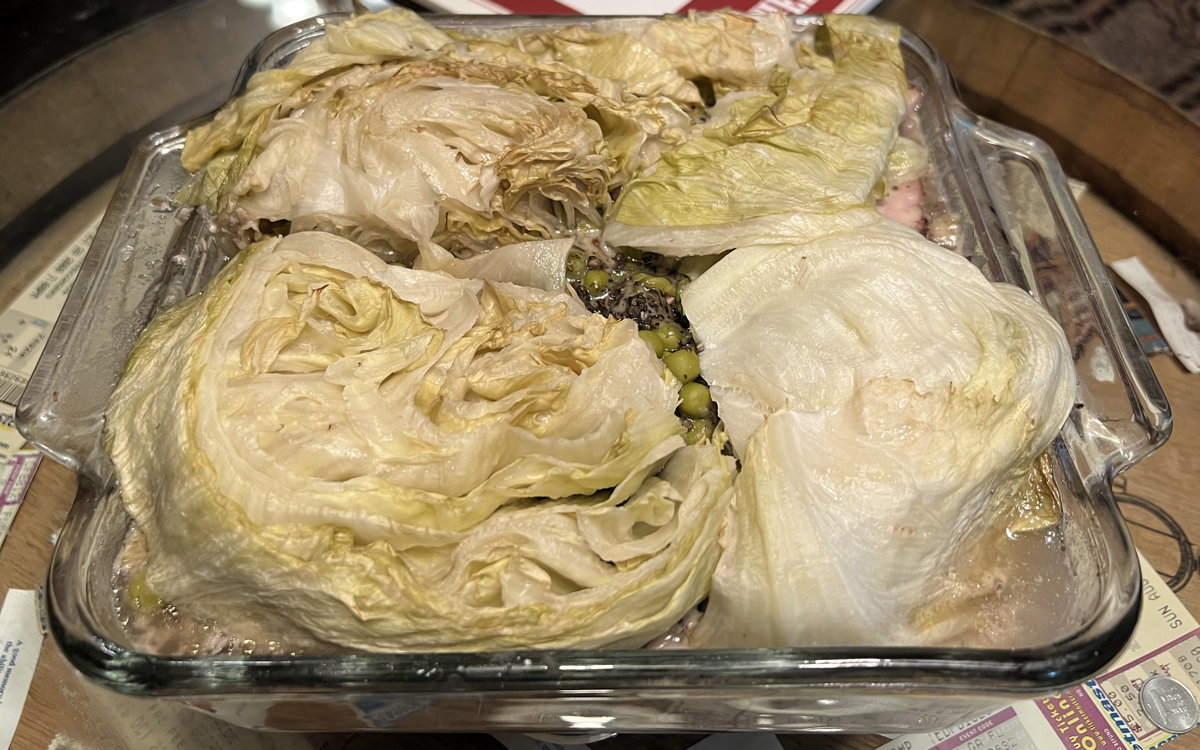
Casserole of Chicken, Miami.
That said, while the recipe was time-consuming it was very simple to follow. It’s written in easy, step-by-step instructions that incorporate (a) prep, then (b) cook. Prep by removing the meat, reserving the water, creaming the butter and liver, and combining the liquids and paprika. Then cook by scalding the milk and cream, stirring into the liver, seasoning, and blending in the yolk.
This is a delicious meal in itself with crackers, toast, or hard rolls.
It is that. But adding some vegetables or salad on the side will set it off very nicely.
The Crêpe Suzette was similarly step-heavy and with easy-to-follow steps. It produced an amazing breakfast—or late supper—and all of the steps can be performed ahead of time; all that’s needed when it’s time to eat is to reheat the crêpes and the orange sauce, heat the liqueur, and assemble.
The folded, buttered crêpes are also great as a late snack without any reheating and without any sauce. In fact, the recipe can be made a lot simpler by ignoring everything after making the crêpes—these are very easy crêpes and very quick. They go great with everything from butter to powdered sugar to jam to chopped vegetables to meat sauce.
Even if you don’t take the time to make the full Crêpes Suzette, I strongly recommend trying the simple crêpe.
In the five recipes that I tried out of the seven in these pages, the crêpes have the only definite error by the typist. The instructions for the Crêpe Suzette call for adding “combined eggs, milk, butter and beat…”. But the ingredients don’t list any eggs. My guess is that it calls for two eggs; that seems to make the appropriate consistency for a thin batter. I think that three eggs would be too much, and that one egg wouldn’t be called “eggs” in the instructions.
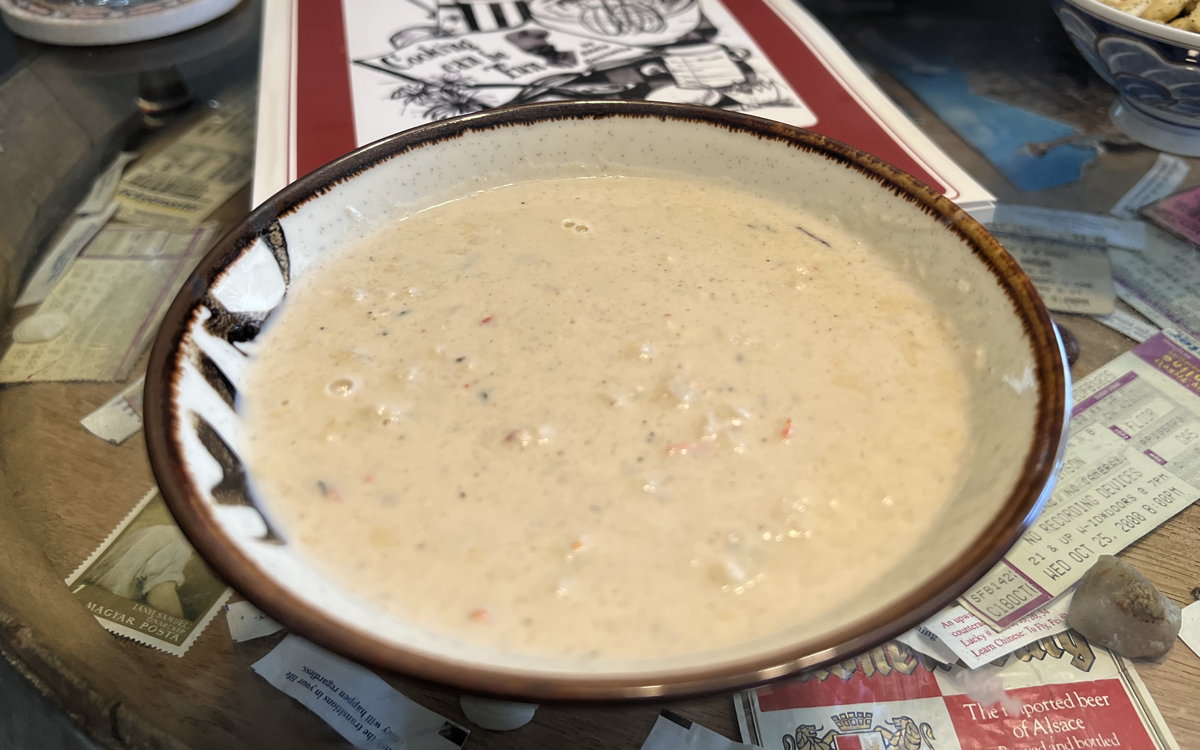
Lobster Bisque.
The Cheese Pie is an orange-flavored cheesecake, but lighter than normal cheesecake because it doesn’t contain cream cheese. It uses sour cream and cottage cheese. This, like the Lobster Bisque and the Crêpe Suzette, is a multi-step recipe where each step is easy. Like them, it ends up being time-consuming, but the result is wonderful.
The only quibble I might have with the recipe instructions is that they make no mention of waiting for the gelatin-based filling to solidify before spreading the sour cream over the top. It’s possible that waiting isn’t necessary. I chose to wait, because it just seemed to me that trying to spread sour cream over an ungelled filling was likely to result in a mess.
That added step means, of course, that the recipe takes even more time: I let the pie and filling sit in the fridge overnight, and then put the sour cream on in the morning and put it back in the fridge to chill until lunchtime.
Like the crêpes, there is an interesting base here that could be used for other, less time-consuming dishes. The pie’s shell is a standard—but very flaky—pastry shell, overlaid with an almond-meringue inner shell. That double-crust pie shell should add appeal to any non-baked pie, whether it’s a cheese filling like this, a purely gelatin filling such as Bicentennial Pie, or a fruit filling.
Which is, I suspect, part of why Doucette used multi-step recipes like this. The steps weren’t meant to be used for one recipe, but to add new techniques to any existing recipes that his viewers might have. While I’ve only added two of these recipes to my rotation—the Miami casserole and the crescents—I regularly make the crêpes without the orange butter and orange sauce, and I expect to use that pie crust recipe as well, with and without the meringue second crust.
The Yummy Crescents are also interesting. They get most of their liquid from tomato juice and their flavor from chopped vegetables. This gives them an interesting red tint as well as flecks of green and red. There is no amount given for the grated cheese spread over them before rolling up. After making them once and just lightly grating Parmesan over the dough, next time I’ll go overboard; I think they were meant to have cheese oozing out of them.
There’s one oddity in this recipe. It calls for 3-½ cups of sifted flour. This is far too low an amount. I ended up putting in about 4-½ cups. I suspect that Doucette’s instructions were to start with 3-½ cups and add more as needed to get the right consistency while kneading. This is such a common technique in recipes of the era and earlier that the typist may have thought it completely unnecessary to make it explicit—especially if she was typing while the television was playing. After all, there was no pause and rewind in 1954!
It’s also possible that if she was handwriting the recipes and typing later, this is a misreading of her own handwriting. I think this is less likely, because the most likely misreading would mean that the recipe calls for five and a half cups, and I think that would be far too much.
And of course it could just be a simple typo: she meant to hit 4 and hit 3 instead. But I would expect to have seen a handwritten correction if that was the case, because it’s pretty obvious once you go to make them. Even when using a bread machine, as I did, to knead the dough.
If you want to see these recipes for yourself, I’ve scanned them and turned them into a PDF that you can download (PDF File, 2.9 MB). You can use them as a PDF, as it’s searchable and has an index, or you can print them out.
One item of trivial technology history: the crêpes suzette are marked with a straight apostrophe where the circumflex accent should be, in each title that includes the word “crêpes”. This is not necessarily a misspelling. I have a typewriter from the era, an Underwood Champion. It has no circumflex. The nearest approximation would be the apostrophe, which could well have stood in for any of the common top-facing diacriticals. In fact, I own three typewriters, the Champion from the late 40s/early 50s, an Olivetti from the late 60s/early 70s, and a Brother from 1991. None of them have a circumflex built in, although the Brother could technically provide accented characters via an appropriate daisywheel if anyone made one.
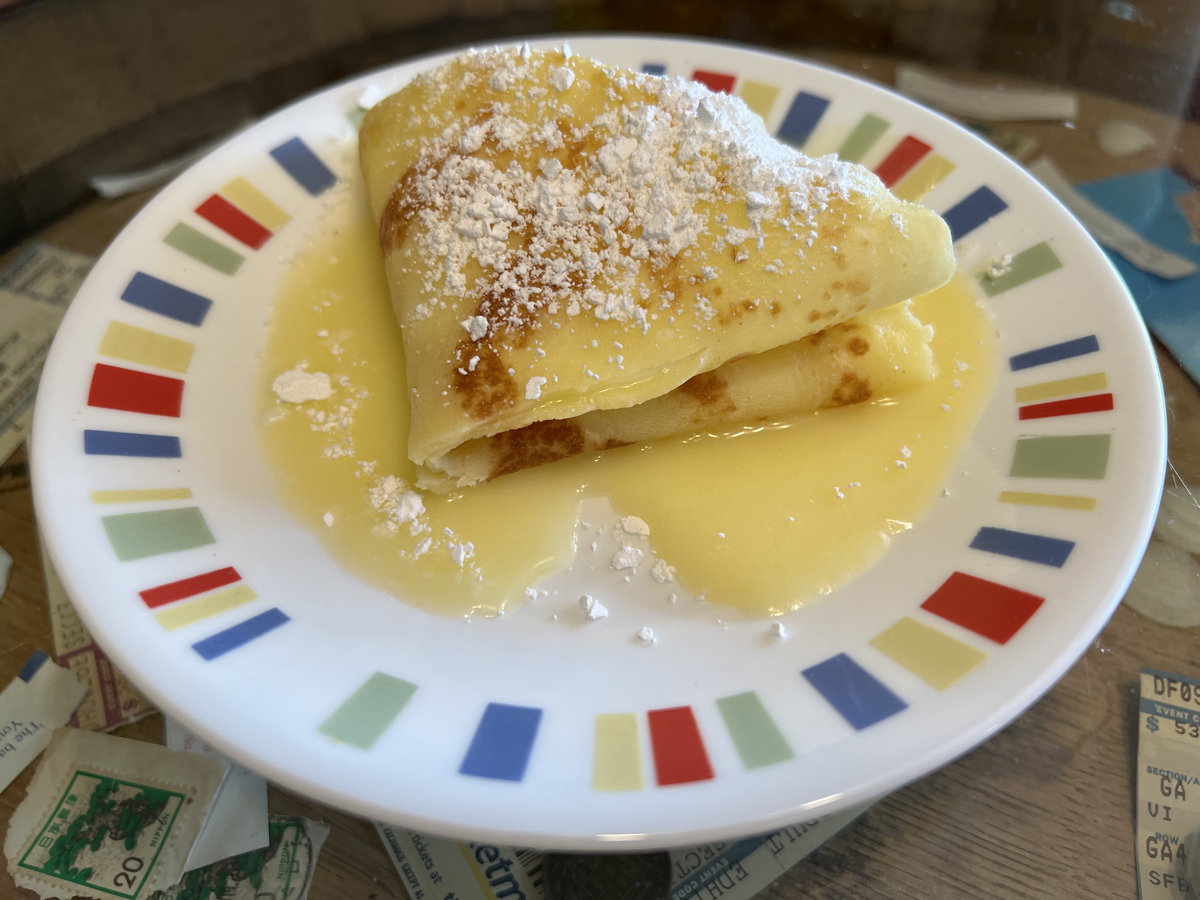
Eddie’s Easy Crêpe Suzette
Servings: 6
Preparation Time: 30 minutes
Eddie Doucette
Tempt Them with Tastier Foods: An Eddie Doucette Recipe Collection
Ingredients
- ¾ cup sifted all-purpose flour
- 3 tbsp powdered sugar
- pinch of salt
- 2 eggs, beaten
- ¾ cup milk
- 2 tbsp melted butter
Steps
- Mix the flour, sugar, and salt.
- Whisk together the eggs, milk, and butter.
- Add the dry ingredients and beat until light and smooth.
- Pour enough batter into a heated and buttered 5-6-inch skillet to thinly cover the skillet.
- Cook until bubbles appear, then turn to cook the other side.
- Continue to make crêpes, adding butter to skillet each time.
- Store finished crêpes in warm oven, covered, until all are done.
- Serving suggestion: spread with butter and fold twice to make a four-layer triangle. Add a dollop of jam or syrup on top.
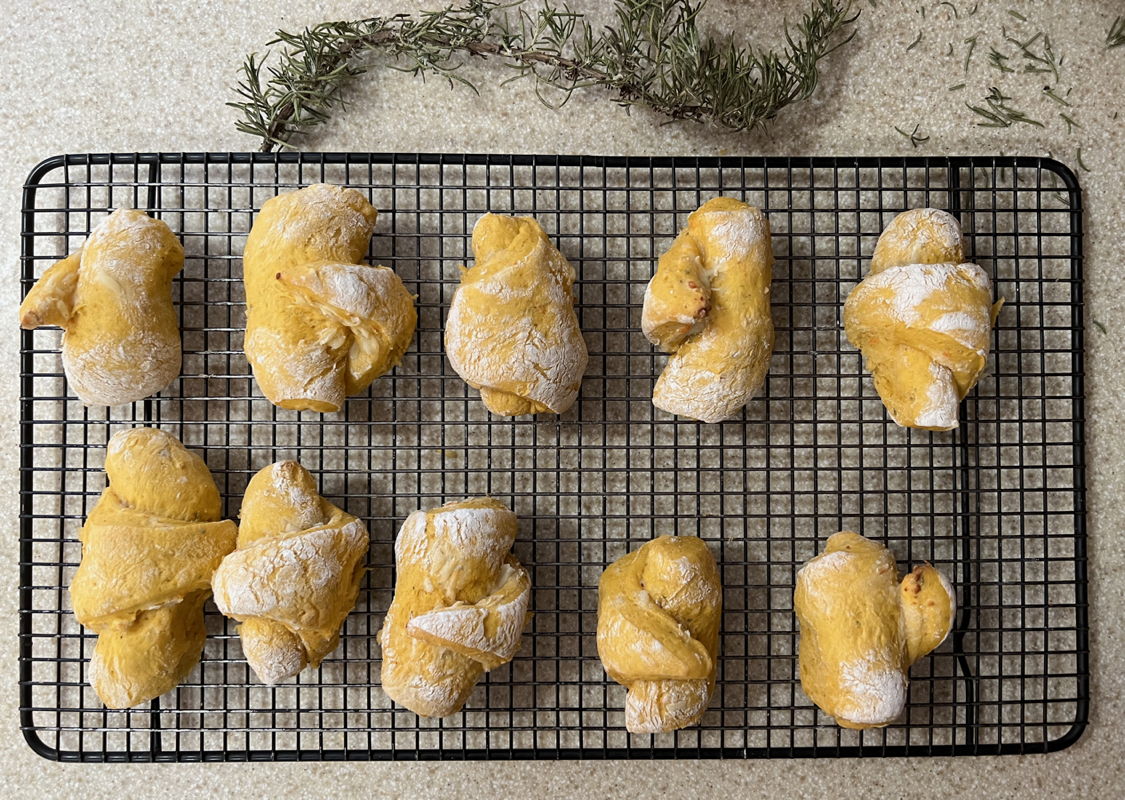
I could certainly have done a better job shaping these, but they still turned out pretty good.
Enjoy! (PDF File, 2.9 MB) and if you have any Eddie Doucette recipes among your or your family’s clippings, I would love to see them. I’ve found a lot of recipes in searchable online archives (of which more later), but I suspect I’m missing as many as I’ve found. By all appearances these are fun and interesting dishes. Drop me a note in the comments with your email, or send a scan or photo to eddie, 21, by way of clubpadgett.com. No punctuation left of the @ sign, just the name and the number.
Any information you can provide about where the recipe came from will also be appreciated! Very little information about him seems to have made it online, and that’s a shame.
In response to Vintage Cookbooks and Recipes: I have a couple of vintage cookbooks queued up to go online.
- July 10, 2024: Tempt Them with Tastier Foods: Second Printing
-
I’ve just made the second print of Tempt Them with Tastier Foods (PDF File, 13.7 MB) available. It includes eighteen more Eddie Doucette recipes I’ve discovered over the past year, including one extra matchbook recipe, German Potato Salad, My Way, which is well worth making—with or without Elvis singing in the background. And the 1966 Turkey ala King looks like a great way to get rid of leftover turkey from Thanksgiving.
If you already have the first printing, I’ve made a PDF of the new recipes (PDF File, 141.6 KB) that you can slip into your book. I’ve also made it available as a smaller pamphlet (PDF File, 203.7 KB). If you choose to use the pamphlet, you will need to print landscape, with short-edge binding, and then fold it over.
- Full Book as PDF (PDF File, 13.7 MB)
- Full Book as ePub (ePub ebook file, 9.7 MB)
- Purchase a print copy
- All the new recipes (PDF File, 141.6 KB)
- Pamphlet of the new recipes (PDF File, 203.7 KB)
A few of these new recipes are from old newspapers that have recently come online. The three from the The Carlisle Mercury of Carlisle, Kentucky, in 1965 and 1966, were from the Nicholas County School web site.
- November 1, 2023: Eddie Doucette’s Potato Bread
-
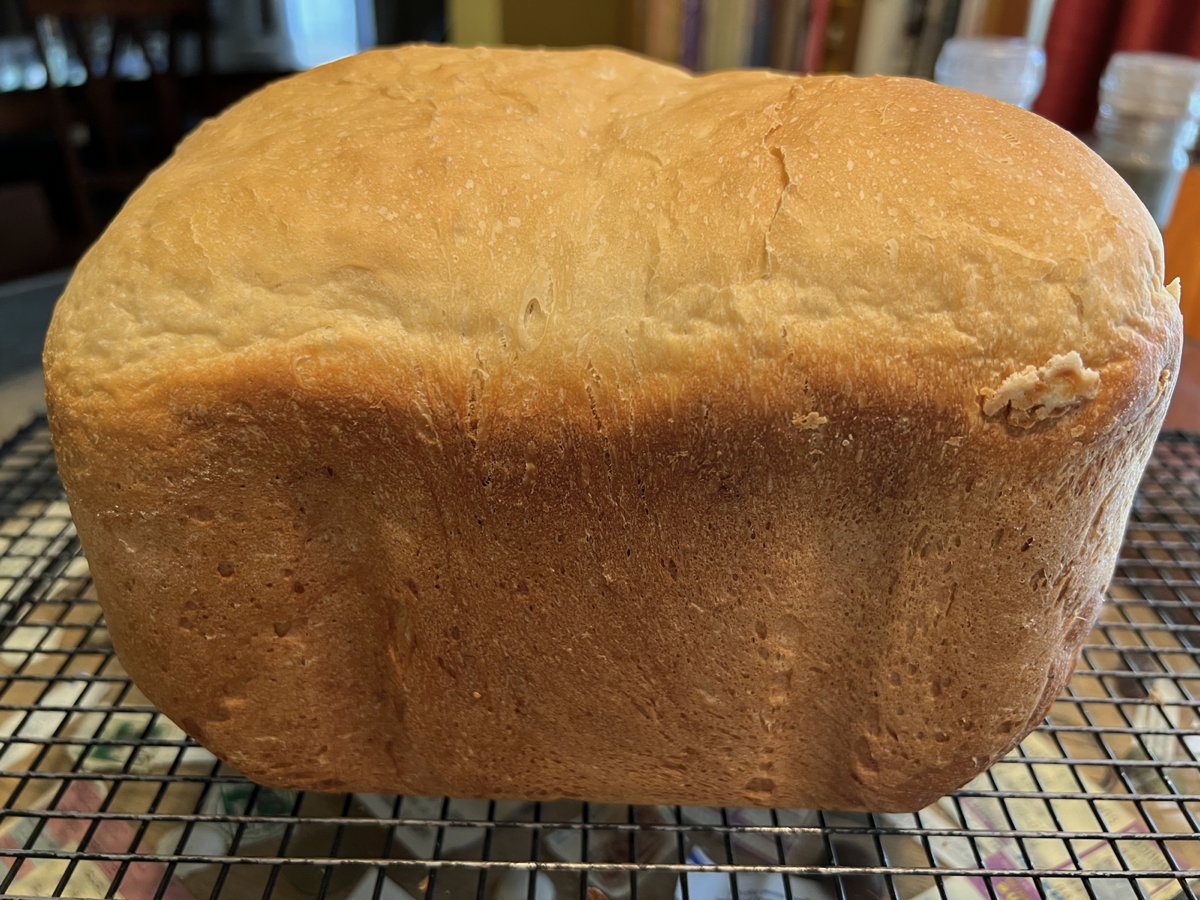
Friday is National Sandwich Day. If you’re having a backyard barbecue or picnic, or just making sandwiches for lunch, consider making this light, flavorful potato bread to help celebrate the occasion.
I found this recipe in the April 4, 1967, Alton Evening Telegraph. It was part of a media blitz for Eddie Doucette’s “French Cooking Can Be Fun” show at Alton’s Monticello College. There was a lot of cool stuff in there, which you can see in Tempt Them with Tastier Foods. Tempt Them is a free download, and it’s also available in print if you (as I do) prefer having a book in the kitchen.
I can’t overemphasize how much fun Eddie Doucette’s recipes are, how much joy he takes in spreading the message that “cooking can be fun”.
The article that featured this recipe is “You Can Have Fun With Yeast”. It’s a typically upbeat and encouraging article from Chef Doucette. He starts off quoting his mother about the importance of bread, talks about the nostalgia, drama, and romance of working with yeast, and ends with a positive affirmation about the pleasures of home cooking:
With our modern mode of cooking and baking it is a pleasure to produce sumptuous light taste-provoking baked goods, whether it be for your own table, a surprise gift for a dear friend, a church social or what-have-you, I’m certain you’ll find you can have “Fun With Yeast.”
It’s an upbeat sentiment that others can only see pessimistically.
When I was growing up nobody could show me how to bake bread—and it’s only gotten worse. It seems such a shame that as a culture we don’t teach our children about the basic things in life—bread making, gardening, sewing—and the value of work. At some point, all these things got to be beneath our dignity. If you can’t work with your hands, you lose the richness of your life and the sense of being productive. — Edward Espe Brown (Flour Power)
Doucette’s unstated motto is, why complain that people don’t bake, when you can instead show people the joy of baking? That cooking can be and is fun!
- August 16, 2023: Oktoberfest Sauerkraut for Potato Day
-
Do you make mashed potatoes for National Potato Day? Crack open a can of beer and use up any leftover mashed potatoes in this sauerkraut-bacon casserole. Eddie Doucette recommended this for Oktoberfest, but if you’re willing to use the oven it’ll be good any time of the year. It might even be good made in a covered grill, but you’ll still want to broil it to get a nice golden crust on the potatoes.
Just thinking about that… I’ll bet it would be awesome made in a charcoal oven.
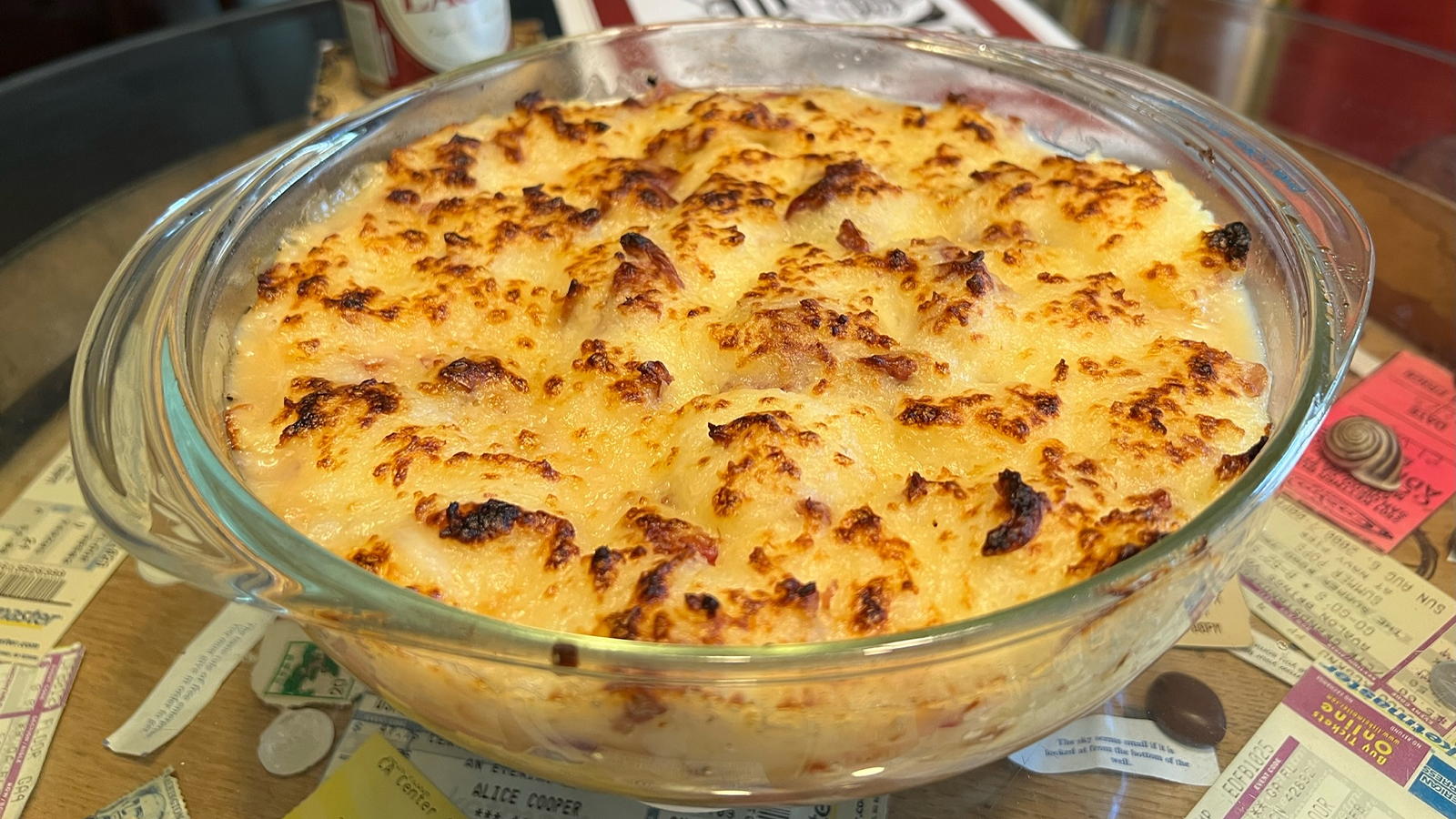
Eddie Doucette’s Oktoberfest Sauerkraut
Servings: 8
Preparation Time: 1 hour, 15 minutes
Eddie Doucette
Tempt Them with Tastier Foods: An Eddie Doucette Recipe CollectionIngredients
- 3-½ cups sauerkraut, drained
- 5 slices meaty bacon, diced
- 1 medium onion, thinly sliced
- ½ tsp caraway seeds
- ½ cup beer
- 2-3 cups or so mashed potatoes
Steps
- Dump the drained sauerkraut loosely in a greased casserole dish.
- Sauté the bacon and onion lightly.
- Add the bacon and onion to the sauerkraut along with the caraway and beer.
- Toss lightly to mix throughout.
- Add enough beer or water to barely cover.
- Cover the casserole dish and bake at 375° for 25 minutes.
- Remove and top with mashed potatoes.
- Place under the broiler until golden brown.
I’m going to assume you know how to make mashed potatoes; if not, Doucette has a really nice recipe for Golden Mashed Potatoes which I’ve reproduced in Tempt Them with Tastier Foods. And of course there are mashed potato recipes all over the Internet. It’s not particularly difficult. The recipe is practically in the title: boil or bake potatoes. Mash them. For extra credit, whip in some butter, some milk and/or cream, and some salt.
- August 2, 2023: Eddie Doucette recipe sampler
-
Tempt Them with Tastier Foods (PDF File, 13.7 MB) contains all of the Eddie Doucette recipes that I could find searching online auction sites and newspaper archives. It includes all of the recipes from the typewritten viewer notes that I wrote about earlier and a lot more. Most of the new recipes come from IGA store advertisements throughout the sixties. Despite some occasional weirdness, I’ve yet to try a recipe that wasn’t tasty. Some are amazing.
His potato bread recipe, for example, came from the pre-presentation press materials of his 1967 French Cooking Can Be Fun evening at Monticello College in Alton, Illinois. As I wrote in my announcement post, he pretty much took over the Alton Evening Telegraph for his media blitz. One of the articles was You Can Have Fun with Yeast.
With our modern mode of cooking and baking it is a pleasure to produce sumptuous light taste-provoking baked goods, whether it be for your own table, a surprise gift for a dear friend, a church social or what-have-you, I’m certain you’ll find you can have “Fun With Yeast.”
I’ve never made potato bread before, so I thought I’d try his recipe. It was amazing—and it was easy to follow, too. Normally I have to make some adjustment for kind of flour and for things the recipe-writer assumed. In this case, I made the potato-liquid mix as directed (using the potato option) and put exactly 4-½ cups (19 ounces) of sifted flour on top of it in the bread machine. With no adjustments at all, out came a perfect loaf.
- July 12, 2023: Tempt Them with Tastier Foods: An Eddie Doucette Recipe Collection
-
In my post about the recipes I found from a viewer of Eddie Doucette’s 1954 television show “Home Cooking”, I noted that he later became the IGA chef and introduced many recipes in abbreviated form in IGA ads in local newspapers. I promised “a few of” those recipes “in a future post”. This is that post, and by “a few”, I mean every recipe I could find researching old newspapers and scouring auction sites for old ephemera. I’ve collected them as a PDF (PDF File, 13.7 MB), an ePub (ePub ebook file, 9.7 MB), and as a print collection.
I was unable to try all of the recipes, but I did try a lot, and they are some very nice recipes. IGA was, and is, a grocery store semi-chain. It stood for “Independent Grocers Alliance”. Recipes under Eddie Doucette’s name began appearing in IGA ads in late 1961 but the official start of Doucette’s relationship with IGA was 1962.
Introducing Eddie Doucette… IGA’s own Chef (former N.B.C. TV Chef and noted food authority) whose recipes and ideas will help brighten mealtime for you in ’62!
Recipes continued to appear under his name in IGA advertisements into 1971. It appears that IGA would provide the recipes to local grocery store owners; the grocery store owners could choose to reproduce these recipes in their advertisements, or provide them, perhaps on recipe cards, to shoppers at the point of sale.
With the IGA deal, he went beyond Chicago. His recipes appeared throughout the United States from Mexico, Missouri to Pocatello, Idaho. They even appeared in the Camrose Canadian of Camrose, Alberta, Canada.
He continued his cooking demonstrations around the country, now under the IGA brand. The Uintah County Library Regional History Center has a 1964 photo of Chef Eddie Doucette showing “some tantalizing food magic at Rex’s IGA Foodliner store demonstration”. Rex’s IGA Foodliner was in Vernal, Uintah County, Utah.
- February 1, 2023: Eddie Doucette’s “Home Cooking” episode guide
-
While searching for an episode of Eddie Doucette’s “Home Cooking” 1954-55 television show, I also kept a list of what episodes I found. As you can see, there are a few missing. If you have Chicago-area TV Guides from the missing weeks, scans or photos of the 1:00 PM slot for Monday through Friday will be greatly appreciated!
- The missing weeks for 1954 are the weeks of September 4, October 23, October 30, November 6, and December 4.
- The missing weeks for 1955 are the weeks of January 15 and January 22.
Monday, August 30 Eddie Doucette returns to his post as mentor, with easily followed recipes. Eddie considers costs as well as glamor, and uses clever touches to meals. Today: Chicken that’s different; peach meringue torte. Tuesday, August 31 Eddie Doucette with easily prepared meals. Today: Ham steak gourmet; green peas Bayou; berry mush. Wednesday, September 1 Pie crust tips; mystery pie. Thursday, September 2 Fillet of sole Jeanine; fruit Carnival. Friday, September 3 Breast of lamb pinwheels; baked meringue spicecake. Monday, September 13 Eddie Doucette prepares “Elmer’s circus cake with carousel frosting.” Tuesday, September 14 Eddie Doucette with baked onions Bordelaise and Lyannaise potatoes. Wednesday, September 15 Eddie Doucette prepares chicken tamale pie as today’s recipe. Thursday, September 16 Eddie Doucette prepares California guest cake; fluffy orange frosting. Friday, September 17 Italian pizza pie is chef Doucette’s treat. Monday, September 20 Eddie Doucette offers recipes for steak strips with soybean sauce, Chinese style, and fluffy rice. Tuesday, September 21 Succotash souffle, deviled tomatoes, Midwest Style, are Eddie Doucette’s offerings. Wednesday, September 22 Eddie Doucette prepares candelabra cake and marshmallow frosting. Thursday, September 23 Lobster curry and Risotta ring are on the Doucette menu today. Friday, September 24 Eddie Doucette prepares sauteed chicken and Bourguignonne. Monday, September 27 Chef Eddie Doucette with pork chops topper; one-meal-casserole. Tuesday, September 28 Eddie Doucette with chocolate angel pie. Wednesday, September 29 No show listed. Thursday, September 30 No show blurb. Friday, October 1 No show listed. Monday, October 4 Chef Eddie Doucette prepares ham loaf with horseradish, scalloped potatoes. Tuesday, October 5 “Apricot Braid.” Eddie Doucette. Wednesday, October 6 Showman-cook Doucette with his specialty, “Bubble and Squeak with Wow Wow Sauce.” Thursday, October 7 Eddie Doucette prepares country style omelet and popovers.
- Eddie Doucette’s “Home Cooking” Recipes (PDF File, 2.9 MB)
- Five pages of recipes typed from Eddie Doucette’s long-lost Chicago-area television show, Home Cooking.
- Bicentennial Pie for Pi Day
- A pie and crust from 1976 for Pi Day. The crust is a coconut crust, and the pie is a whipped orange-gelatin filling. Top it all off with chopped macadamia nuts and you’ve got a pie fit for any holiday.
- Discretely and with quiet strength: the Underwood Champion Portable
- The ultimate distraction-free writing app is a typewriter.
- Eddie Doucette’s “Home Cooking” episode guide
- Home cooking episode guide gleaned from 1954 and 1955 Chicago-area TV Guides.
- Macaroni Menu Magic
- Eddie Doucette, Consultant Chef, shows you “How to Prepare and Serve Spaghetti Macaroni Noodles”. “Happiness is macaroni.”
- Tempt Them with Tastier Foods: An Eddie Doucette Recipe Collection
- When I get locked into a serious recipe collection, the tendency is to take it as far as I can. You can benefit from my obsession with this collection of wonderful recipes from the fifties and sixties “files of Eddie Doucette”, television personality and IGA chef.
- TV Guide—Chicago (December 11, 1954) at Internet Archive
- Local program listings for the week of December 11-17. Marion Marlow: Tops with Godfrey?
More Eddie Doucette
- Tempt Them with Tastier Foods: Second Printing
- The second printing of Tempt Them with Tastier Foods contains several newly-discovered Eddie Doucette recipes, as well as an interview with the chef’s son, Eddie Doucette III.
- Eddie Doucette’s Potato Bread
- This is an amazing bread for breakfast or sandwiches, easily made in a bread machine. It’s a great choice for National Sandwich Day this Friday.
- Oktoberfest Sauerkraut for Potato Day
- This simple sauerkraut casserole turns into an amazing National Potato Day treat when topped with mashed potato.
- Eddie Doucette recipe sampler
- Despite their occasional weirdness, I’ve yet to try a recipe that didn’t turn out at least pretty good. Some are amazing.
- Tempt Them with Tastier Foods: An Eddie Doucette Recipe Collection
- When I get locked into a serious recipe collection, the tendency is to take it as far as I can. You can benefit from my obsession with this collection of wonderful recipes from the fifties and sixties “files of Eddie Doucette”, television personality and IGA chef.
- One more page with the topic Eddie Doucette, and other related pages
More food history
- Aunt Jenny’s Old-Fashioned Christmas Cookies
- Spry shortening’s 1952 Christmas cookie book was one of many by which they attempted to compete with Crisco.
- Tempt Them with Tastier Foods: Second Printing
- The second printing of Tempt Them with Tastier Foods contains several newly-discovered Eddie Doucette recipes, as well as an interview with the chef’s son, Eddie Doucette III.
- A Centennial Meal for the Sestercentennial
- How did Americans in 1876 celebrate the centennial culinarily? Some of their recipes are surprisingly modern, and some are unique flavors worthy of resurrecting.
- Looking back over 1950 in vintage cooking
- While I didn’t make my goal of trying a recipe every month in the month it was meant for, following this calendar through 2023 was an interesting experience and provided some very good food.
- Refrigerator Revolution Revisited: 1928 Frigidaire
- The 1928 manual and cookbook, Frigidaire Recipes, assumes a lot about then-modern society that could not have been assumed a few decades earlier.
- 12 more pages with the topic food history, and other related pages
More recipes
- Tempt Them with Tastier Foods: Second Printing
- The second printing of Tempt Them with Tastier Foods contains several newly-discovered Eddie Doucette recipes, as well as an interview with the chef’s son, Eddie Doucette III.
- Looking back over 1950 in vintage cooking
- While I didn’t make my goal of trying a recipe every month in the month it was meant for, following this calendar through 2023 was an interesting experience and provided some very good food.
- Plain & Fancy in the seventies with Hiram Walker
- Enjoy a whole new world of fun, excitement and discovery in Hiram Walker Cordials, adding a personal touch to all your memorable moments and special occasions—plain or fancy!
- Eddie Doucette recipe sampler
- Despite their occasional weirdness, I’ve yet to try a recipe that didn’t turn out at least pretty good. Some are amazing.
- A Bicentennial Meal for the Sestercentennial
- Four community cookbooks celebrating the bicentennial. As we approach our sestercentennial in 2026, what makes a meal from 1976?
- Five more pages with the topic recipes, and other related pages
